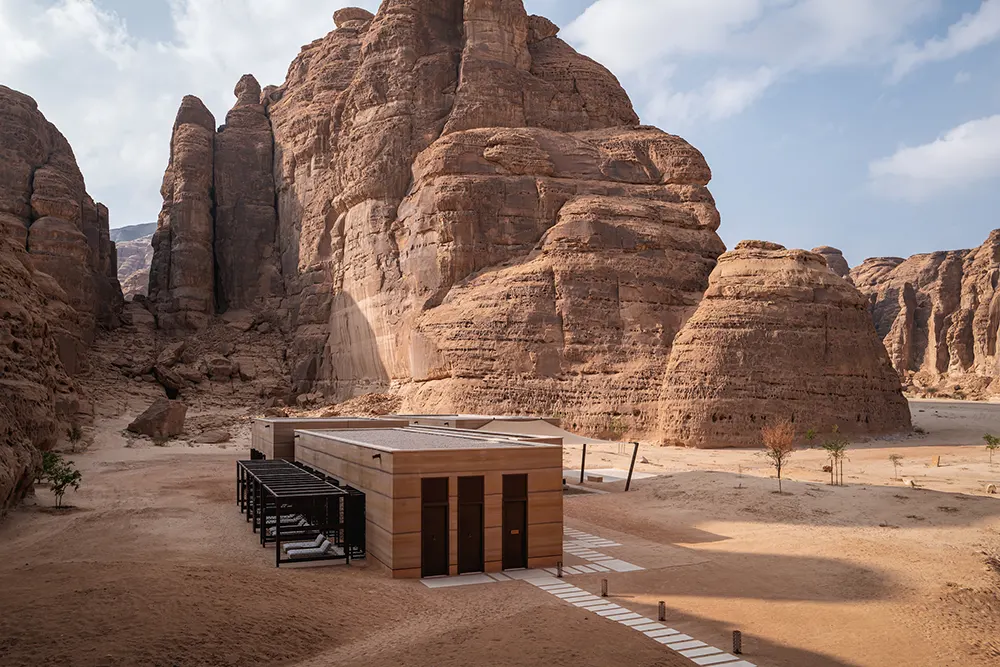
Banyan Tree AlUla offers a rare kind of hospitality, one shaped by its setting in Saudi Arabia’s Ashar Valley. Framed by sandstone cliffs and expansive desert views, the resort rests within a protected area often called the world’s largest living museum. Rather than contrast the environment, the design draws influence from it, connecting architectural precision with regional references and a measured use of material.
The design team at AW2 Architecture & Interiors structured the resort to respect the geography. With careful siting and scaled interventions, the resort appears grounded within the surrounding topography. Buildings rise and fall with the terrain, soft in tone and direct in form. The project received international recognition with the Prix Versailles award for “World’s Most Beautiful Hotel Exteriors 2023.”
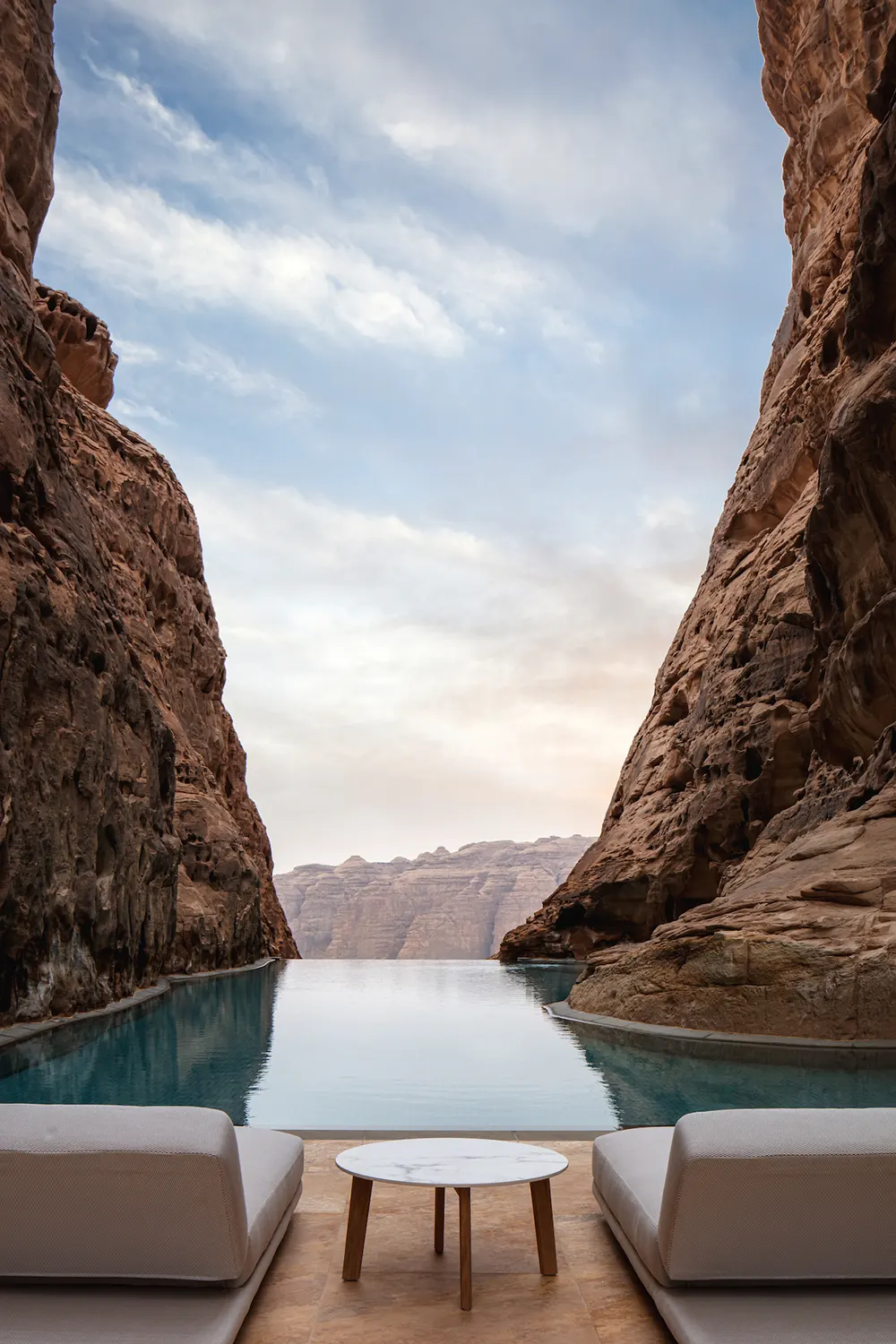
Material Language with Local Influence
The resort borrows visual cues from Bedouin traditions, referencing tents, textures, and patterns that speak to movement and rest. Rather than replicate vernacular forms, the architecture interprets cultural memory through rhythm and restraint. Interiors and exteriors flow between built form and the natural desert floor, with open-air paths, internal courtyards, and breezeways that encourage slow circulation.
Design elements avoid ornamentation and rely on proportion, light, and surface. At every scale, the resort creates thresholds between shelter and exposure, allowing the environment to enter while offering calm reprieve from the heat and glare.
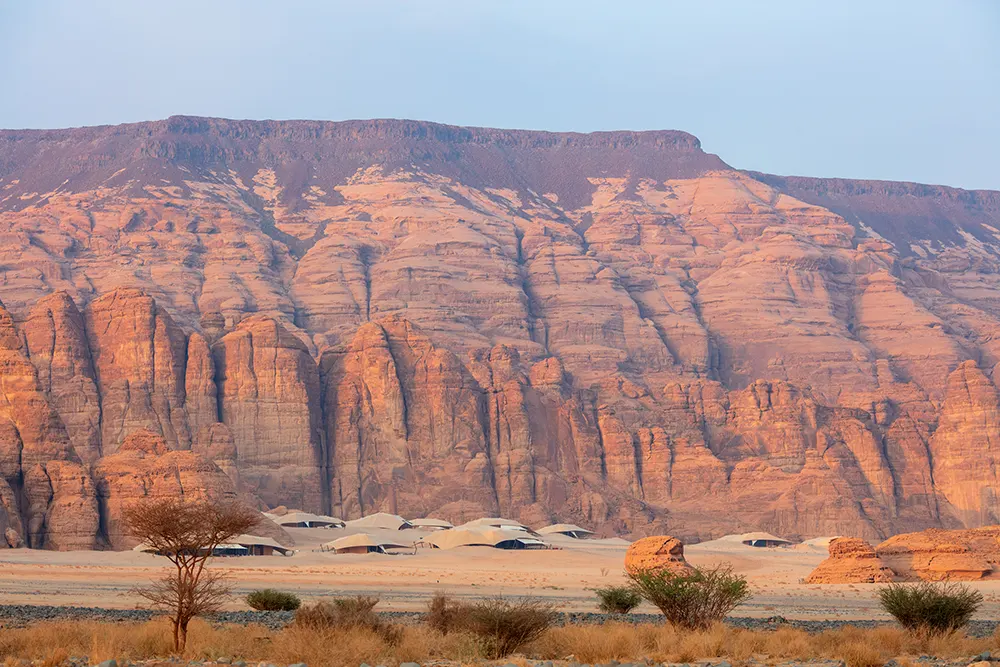
Outdoor Living by Talenti
Talenti, the Italian outdoor furniture company based in Umbria, supplied the open-air furnishings for the resort through its Argo Wood collection designed by Ludovica Serafini and Roberto Palomba. The collection carries a refined but solid character, shaped by deep seating, slatted teak frames, and weather-resilient finishes.
The choice aligns with the project’s balance of clarity and comfort. In shaded patios, terraces, and poolside spaces, the Argo Wood pieces create continuity between architecture and atmosphere. The tactile warmth of wood offsets the mineral presence of the surrounding stone and sand, while cushions and fabric tones connect to the natural palette without competing with it.
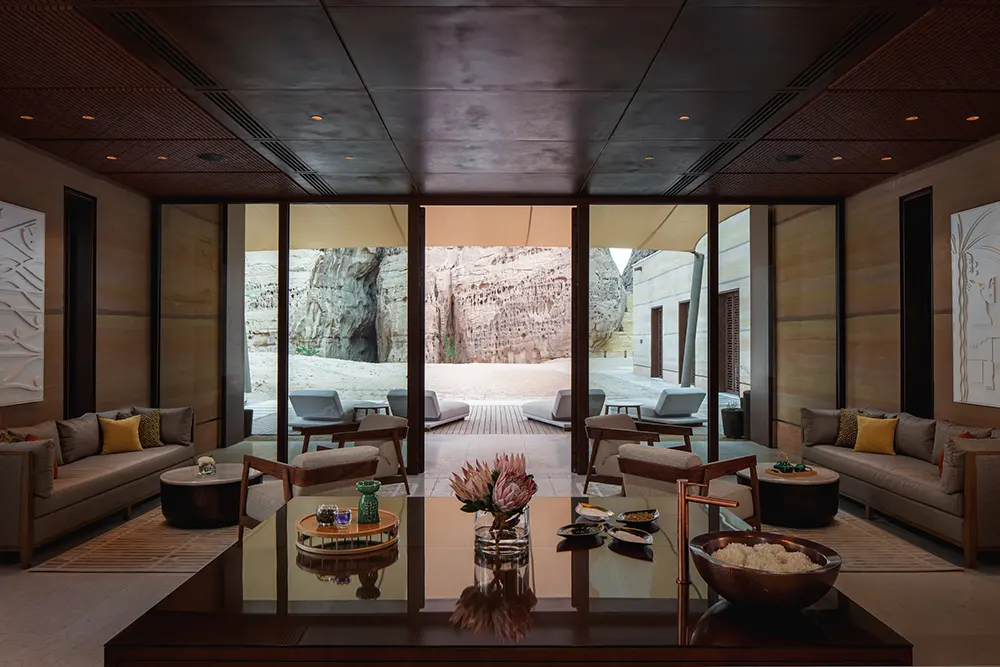
Talenti’s Expanding Presence
Over the years, Talenti has grown from a regional design brand into a global name in outdoor furniture. With collections designed by a roster of international architects and designers, the company creates products that move easily between residential and contract applications. Each piece focuses on durability and adaptability, with attention to both structure and finish.
In the Banyan Tree AlUla project, Talenti’s ability to match functional needs with design precision becomes clear. Furniture becomes a spatial tool, used to extend living into the open, to soften thresholds, and to support rest within vast surroundings.
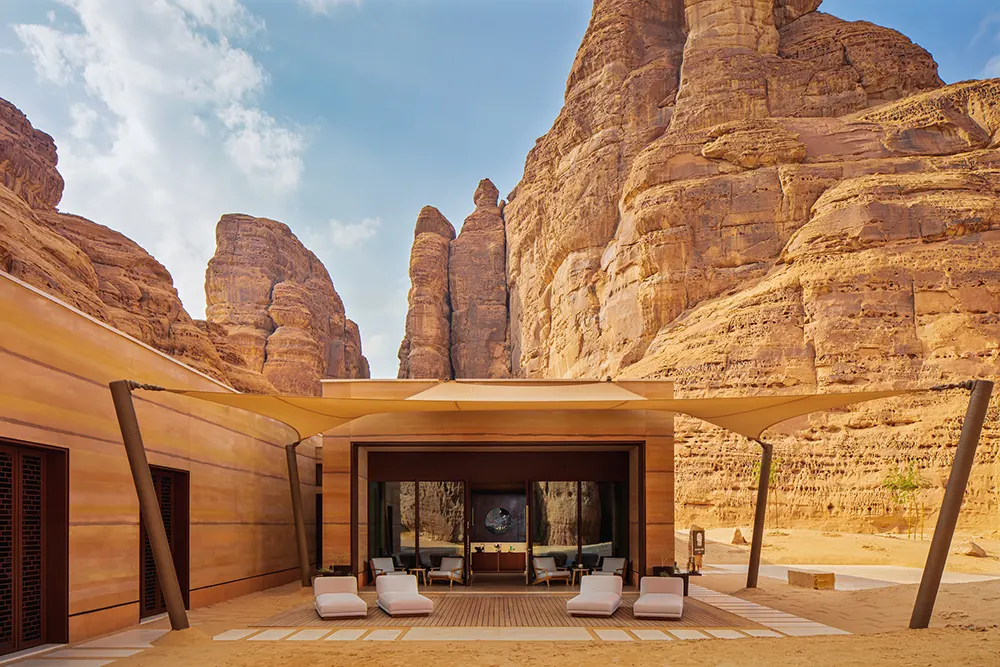
Beyond Function: A Sense of Placement
The resort’s overall atmosphere results from layered decisions that respect the land while responding to comfort and hospitality. Banyan Tree AlUla offers its guests quiet access to one of Saudi Arabia’s most dramatic regions. With its considered design and integrated outdoor settings, the resort builds a dialogue between natural texture and architectural rhythm, supported by pieces that hold their place without overstatement.
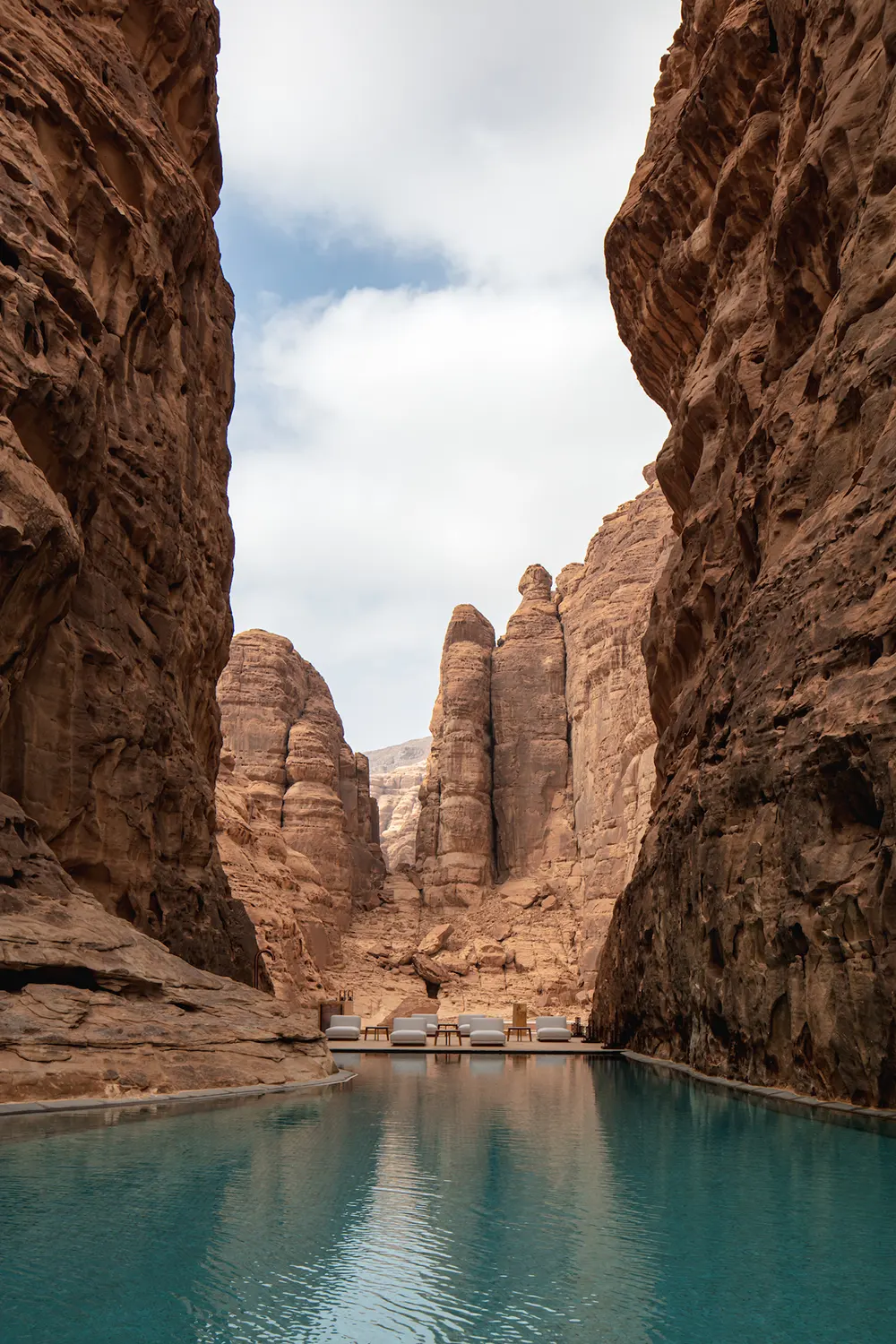
Previewed During Milan Design Week 2025
Visitors to Salone del Mobile 2025 had the chance to preview Talenti’s presence through various installations across the city. These displays reinforced the brand’s commitment to creating thoughtful, versatile outdoor pieces capable of adapting to both remote resorts and urban residences.
Project Name: Banyan Tree AlUla
Year: 2024
Location: Saudi Arabia
Type: Contract – Hospitality
Designer/Architect: AW2 Architecture & Interiors
Talenti Products: Argo Wood Collection by Ludovica Serafini and Roberto Palomba



